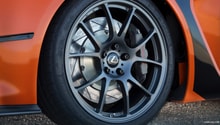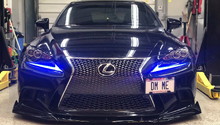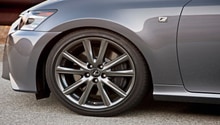Lexus: Are Spacers Safe?
Spacers are designed for an aftermarket look in which you control how far out your wheels can be. However, they do come with some potential danger.
This article applies to the Lexus IS, ES, GS, LS, and RX (2005-2013).
Wheel spacers can definitely improve the look of your ride by moving the wheels out to be flush with the fender wells. However if you decide to go this route you need to be careful and do you research on what you purchase, as you get what you pay for definitely holds true here. By themselves, spacers are inherently dangerous due to them adding another potential point of failure on the car. In addition, some manufacturers use lesser quality materials to save on costs to make the spacers more budget friendly.
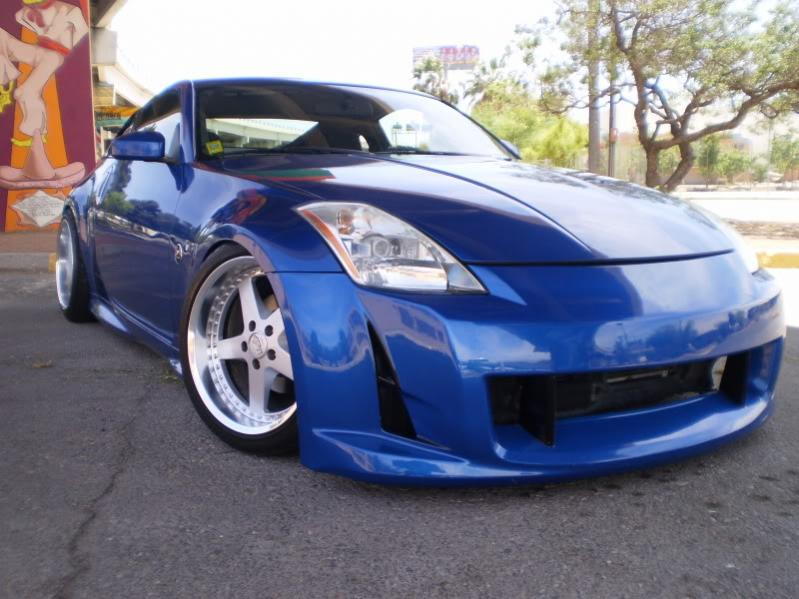
Wheel Spacers
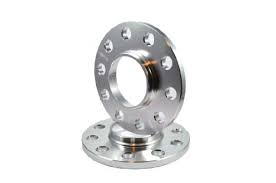
Figure 1. Hub-Centric wheel spacers (notice the raised lip in the center for the wheel hub).

Figure 2. No-Centric wheel spacer (notice no beveled edge for the lug nuts and no raised lip for the hub in the center. Avoid these).
These are the traditional style wheel spacer that slip on over your old wheel studs. You need to be extra careful with these for a few reasons:
- If they are the kind with huge slots to fit over studs so they're universal to multiple different cars, they have the potential to slide around and cause vibrations while driving.
- You need to make sure your factory studs are long enough. The lug nut should be able to engage on the stud by at least the diameter of the stud. If it can't, you'll either need to go to thinner spacers or get longer and stronger studs installed.
- If you get lug-centric spacers, the lug nut is used to center the spacer on the wheel, you need to make sure your using acorn style lug nuts. Any mis-alignment of the spacer can cause vibrations.
With all the precautions aside, you also will need to do more work to make sure the spacers are correct. This includes regularly checking the wheel torque at a minimum of every oil change and doing routine inspections of the stud condition.
Wheel Adapters
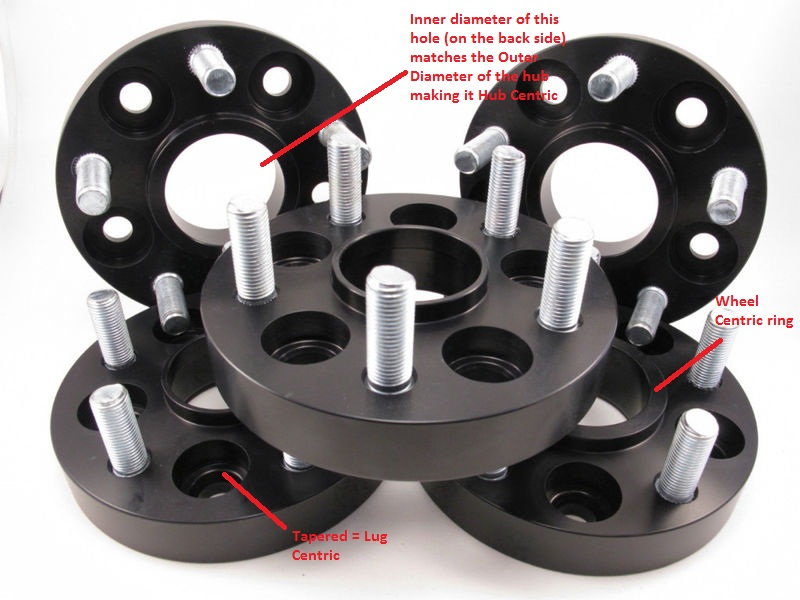
Like the slip on spacers, these will move your wheels out. These normally come in thicker sizes though, so they'll have new studs pressed into them so you can fully engage the lug nuts. The adapter style are more expensive, but generally regarded as being somewhat safer than the slip on style, because they fully engage the lug nuts. The same precautions still apply as the slip on style, but you'll also need to check the torque on two sets of lug nuts: the set holding the spacer to the hub, and the set holding the wheel to the spacer. Be warned that if you go with an adapter thinner than the length of your factory studs, you'll need to trim some of the stud off or get shorter studs so the wheel can sit flush with it.
Scheduled Maintenance
- Check the lug nut torque regularly at every oil change at the least, although it is recommended that you check a couple times a month.
- Inspect the stud condition every couple months. Look for and replace any studs that are bending, cracking, starting to pull through the hub, etc.
- Inspect that the spacer still fits tightly onto the hub.
Common Questions
What are spacers for?
Spacers are used to move the wheel away from the hub. This can allow for you to achieve the look of the wheels being flush with the fender well, or run higher offset wheels that may hit suspension components without the spacers.
Are spacers safe?
Yes and no. There is no perfect spacer on the market, which means there is always the chance of failure. You get what you pay for and depending on your application, you could be fine or have an issue a thousand miles later. Spacers add another component to the vehicle, which means one more potential of something failing, except when these fail you run the risk of losing a wheel.
How much are spacers?
The price varies on the quality, they have been known to range from $8 to $500+ for a nice set of adapters. To give you a general idea, you will spend about half or more of what the correct set of wheels would cost for a set of good spacers.
What are the alternatives to spacers?
Getting wheels with the correct offset is the alternative to achieve the same results as spacers. Spacers lower your wheels offset, so a wheel with a lower offset will do the exact same thing. It'll cost more, but you'll get a much safer ride.
Common Issues
Wheel Centering
Lug-centric spacers can be hard to get the wheel to center on properly. Hub-centric spacers while more costly, are about 10x easier to center the wheel.
Broken Studs
The stud holes on cheaper wheel spacers can begin to widen overtime. This leads to the spacer moving around and putting additional stress on the studs. Overtime, this can cause the studs to crack and break causing lug nuts to start coming off. I cannot stress it enough that if you feel any abnormal vibration while driving, you need to pull over immediately and check to make sure all lug nuts are present and tight. The worst case scenario is losing one or more wheels while going down the highway which puts both your life and the ones around you at risk.
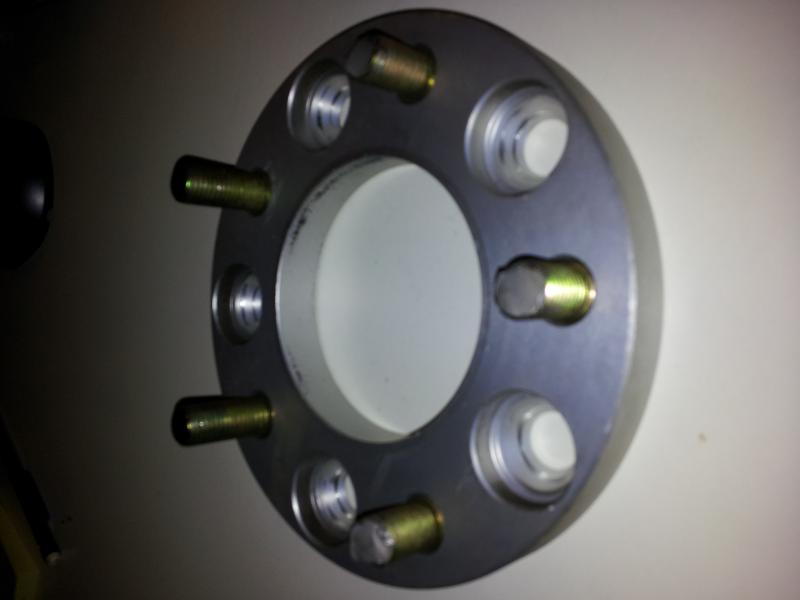
Increased Wear on Suspension Components
Spacers and wheels with a lower offset will put more strain on the wheel bearings due to the wheel being further from the hub. Generally a smaller distance change won't cause a noticeable change in the lifespan of the wheel bearings, but when you go the extreme (1.5-2"+) you'll be replacing wheel bearings a lot faster.
Related Discussion
Wheel Spacers - Clublexus.com


